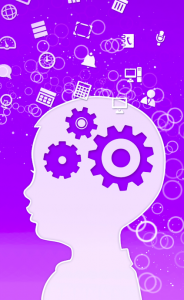
The term neurodidactics was coined in Germany in 1988 from the fusion of various fields of study such as education, psychology, and neuroscience. This fusion was built from an attempt to understand the aspects of neural development that influence learning. As well as, to use this knowledge to create new methodologies in a classroom and to optimize the teaching-learning process.
“Teaching and learning are two processes that are inextricably linked and that are mutually conditioned. Learning involves actively treating, storing, and retrieving the information that is received, and teaching must help those who want to learn so that they can properly develop their skills to process information and systematically apply their skills to solving problems of nature, society and thought.” Jensen, Eric. 1998. Teaching with the Brain in Mind. Alexandria, Va.: Association For Supervision And Curriculum Development.
Benefits of Neurodidactics
Functional knowledge of the brain makes it easier to identify the causes of a particular learning disability and thus design the appropriate methodologies that can be used in the classroom. As a result, new technologies – ICT – have a relevant role to play in streamlining the learning process. Consequently, they make it more attractive, motivating, collaborative, communicative and visual. These qualities are essential in neurodidactics. At Smartick we apply neurodidactics to learning mathematics and, due to new technologies, do it in a much more attractive, visual, and efficient way.
The five principals of neurodidactics tell us that the brain does much better with learning if it is fun, spontaneous, creative, active (with movement), respectful of sensitive periods and taking positive emotions into account.
More about Neurodidactics
Ten principles developed by Eric Jensen in a brief titled “10 Most Effective Tips For Using Brain-Based Teaching & Learning” (2010), which can be found in his book Teaching with the Brain in Mind.
- Physical activity, recess, and voluntary movement in the classroom reduce stress, promote neurogenesis and stimulate learning.
- Students’ social conditions influence their school life and academic performance.
- The brain is a malleable organ, so you can induce neurogenesis through the development of cognitive and emotional skills. Things like literacy, meditation, artistic training, and enriching environments.
- Acute and chronic stress have a negative impact on behavior and learning.
- Each brain is unique and different in its maturation. A varied education must be offered according to the skills, talents, and interests of each student.
- The excess of content and longer instruction times saturate working memory, as a result, it makes memory processes and learning difficult.
- Artistic training has a positive impact on learning and on emotional and social-cognitive skills.
- Emotions influence learning and the school must teach the appropriate emotional and social skills to improve students’ academic performance.
- Learning disorders and delays can be improved, and even overcome, by the brain’s malleability if appropriate compensatory education programs are used.
- Memory is not fixed but malleable. Remembering what has been learned requires continuous practice and review of contents.
What is Neurodidactics?: Take a look at this video.
Learn More:
- The Role of Emotions in Learning
- Exploring Cognitive Training Using Memory Games
- Reading Difficulties in Children: Vision and Learning
- Learning by Playing Videogames
- Exercising Memory with SmartickBrain Games
- Master Math! 10 Reasons to Help Your Child do Just That - 05/28/2020
- Why Do Children Believe That Things Happen? - 05/25/2020
- Is Self-Control Linked to Health? - 05/19/2020







